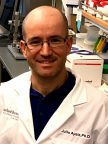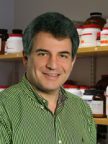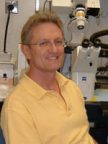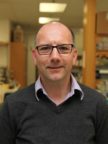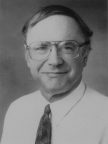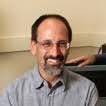All Personnel (alphabetical)
Complete Directory of all MPB Personnel
Administrative Team
Other administrative needs are delivered by personnel in POD 3 with special responsibility for MPB. Click on their names to access a picture.
POD3 Director: Kimberly Turner
HR – Donna Ingram
Grant Admin – post-award: Bess Cahill, Becky Bowden, Barbara Hill
Grant Admin – pre-award: Trang Doan, Alicia Davis, Jessica Hall
Procurement/Travel: Chris Reagan
IT – Tim Dugger
: 2525 West End Ave
Suite 500
Nashville, Tennessee - 27203-1764
Graduate Student, Arrojo Laboratory, , Molecular Physiology and Biophysics
Assistant Professor of Medicine, Division of Clinical Pharmacology and Cardiovascular Medicine
Assistant Professor, Molecular Physiology and Biophysics
Counter-regulatory immune mechanisms in hypertension and end-organ damage
: AA6103 VUIIS
- : matt.alexander@vumc.org
- : 615-936-3623
Assistant Professor, Molecular Physiology and Biophysics
The Arrojo e Drigo lab focuses on understanding the mechanisms regulating post-mitotic cell homeostasis and longevity. Many post-mitotic cells can be as old as the organism, which makes them remarkably long-lived. We study long-lived cells in different organs and explore their developmental trajectory, structure-function and aging patterns. Our lab uses a combination of single cell sequencing and high-resolution light, electron and isotope microscopy platforms to overlay cell structure-function with molecular identity, age and metabolism.
: 718 Light Hall
- : r.drigo@Vanderbilt.Edu
- : https://lab.vanderbilt.edu/drigo-lab/
Assistant Professor, Department of Medicine, Division of Nephrology and Hypertension
Assistant Professor, Department of Molecular Physiology and Biophyiscs
Associate Professor, Molecular Physiology and Biophysics
Research in the Ayala lab focuses on gut-brain interactions that regulate energy balance. Specifically, we are interested in identifying regions in the central nervous system and molecular mechanisms within those regions that mediate the effects of the gut hormone Glucagon-like peptide-1 (Glp1) and related Glp1 receptor (Glp1r) agonists on feeding behavior. Our lab combines transgenic mouse models, targeted pharmacological interventions and state-of-the-art metabolic phenotyping capabilities to address research questions. We aim to extend the technical expertise in the lab to leverage the existing imaging, circuit mapping, electrophysiology and behavioral phenotyping capabilities at Vanderbilt. Other projects in the lab focus on leveraging biochemical and pharmacological properties of the Glp1r towards the design of more effective therapeutics for obesity and diabetes
: 813 Light Hall
- : julio.e.ayala@vanderbilt.edu
Graduate Student, Young Laboratory, Molecular Physiology & Biophysics
Graduate Student, Carrasco Laboratory , Molecular Physiology & Biophysics
Research Assistant Professor, Molecular Physiology and Biophysics
Graduate Student, Ayala Laboratory, , Molecular Physiology and Biophysics
Professor Emeritus, Molecular Physiology and Biophysics
Structure, dynamics, and interactions of membrane proteins
: 727A Light Hall
- : Al.Beth@vanderbilt.edu
- : (615) 322-4235
Associate Professor, Ophthalmology & Visual Sciences
Assistant Professor, Molecular Physiology and Biophysics
Pharmacogenomics and metabolomics of retinal diseases
: 11425 MRBIV
- : milam.brantley@Vanderbilt.Edu
- : (615) 875-7650
Associate Professor, Medicine, Division of Cardiovascular Medicine
The Brown lab explores the role of the epigenome and transcription in pathologic gene regulation that drives cardiometabolic disease.
: 352 Preston Research Building
Division of Cardiovascular Medicine
Nashville, - 37232- : jonathan.d.brown@vumc.org
- : (615) 936-1556
Graduate Student, Gannon Laboratory, Molecular Physiology & Biophysics
Associate Professor, Department of Pharmacology
Department of Molecular Physiology and Biophysics
Chair of the Department of Molecular Physiology and Biophysics
Professor, Molecular Physiology and Biophysics
Joe C. Davis Chair in Biomedical Science
: 711 Light Hall
2215 Garland Ave
Nashville, Tennessee - 37232-0615: 707F Light Hall
2215 Garland Ave
Nashville, Tennessee - 37232-0615- : nancy.carrasco@vanderbilt.edu
- : 615-343-3694
Assistant Professor, Department of Medicine, Division of Diabetes, Endocrinology & Metabolism
Assistant Professor, Department of Molecular Physiology and Biophysics
Professor Emeritus, Molecular Physiology and Biophysics
Professor, Molecular Physiology & Biophysics
Genetic basis of susceptibility to type 2 diabetes.
: 735B Light Hall
- : wenbiao.chen@vanderbilt.edu
- : (615) 936-7390
Research Instructor, Molecular Physiology and Biophysics
: 511 Light Hall
- : rui.chen.1@vanderbilt.edu
- : (615) 925-5009
Professor, Molecular Physiology and Biophysics
Jacquelyn A. Turner and Dr. Dorothy J. Turner Chair in Diabetes Research, Medicine
Diabetes, glycogenolysis, gluconeogenesis, physiology.
: 704A/710 Robinson Research Building
- : alan.cherrington@vanderbilt.edu
- : (615) 322-7013
Assistant Professor, Molecular Physiology and Biophysics
Research area: Structural biology and mechanisms of substrate catalysis, transport and inhibition in glucose and lipid metabolism mediated by PAP2 and MFS superfamily membrane proteins
: 746 Robinson Research Building (RRB)
- : derek.p.claxton@vanderbilt.edu
Assistant Professor, Molecular Physiology and Biophysics
Research in the Coate Laboratory seeks to identify mechanisms controlling the activity and identity of human pancreatic islet cells in health and disease. Our work relies heavily on the use of human cadaveric donor islets coupled with specific genetic targeting of alpha and beta cells, static and dynamic assessments of hormone secretion, bulk and single cell RNA-sequencing, chromatin profiling, immunocytochemistry, confocal microscopy, and transplantation of human islets into immunocompromised mice for in vivo studies.
: 8415 MRB IV
: 8425B MRB IV
- : kathryn.coate@vanderbilt.edu
- : 615-545-3562
- : https://lab.vanderbilt.edu/coate-lab/
Professor, Vice Chair, Molecular Physiology and Biophysics
Role of Ca2+/calmodulin-dependent protein kinase II (CaMKII) in normal synaptic signaling and in neuropsychiatric disorders.
: 724A Robinson Research Bldg (MRB1)
- : roger.colbran@vanderbilt.edu
- : (615) 936-1630
- : https://lab.vanderbilt.edu/colbran-lab/
Professor, Cardiovascular Medicine
Graduate Student, Assistant, Associate, Full and Emeritus Professor, Molecular Physiology and Biophysics, 1971-Present
Dr. Corbin, together with Dr. Sharon Francis, devoted his research career to determining the biochemical mechanisms whereby cyclic nucleotides mediate the effects of hormones, neurotransmitters, and other agents on many biological processes. In 1976, he identified a novel protein that bound to cyclic GMP, which was later purified and characterized as being a phosphodiesterase that degrades cyclic GMP. This enzyme, now known as PDE5, is the site of action of drugs used to treat erectile dysfunction. Dr. Corbin was a HHMI investigator for 17 years.
Graduate Student, Hasty laboratory, Molecular Physiology & Biophysics
I am a 5th year graduate student in Alyssa Hasty’s lab. My interests are at the interface of physiology and immunology and I am focused on using bioinformatic approaches to study the relationship between immune cells and metabolic perturbations. My project in the lab is to study adaptive immunity in the context of weight loss and weight regain, which we refer to as weight cycling. To date, little work has been done to describe and define changes in T cell activity within adipose tissue during significant weight changes. In the Hasty lab, I am working to understand the complex interplay between adipocytes, macrophages, and T cells that induces adipose tissue T cell accumulation, activation, tolerance, and hypersensitivity.
Graduate Student, Chen Laboratory, Molecular Physiology and Biophysics
Graduate Student, Hinton Laboratory, Molecular Physiology and Biophysics
Professor, Radiology and Radiological Sciences
Professor, Biomedical Engineering
Professor, Molecular Physiology and Biophysics
Development and application of novel imaging and spectroscopic approaches to studying muscle function.
: AA-3105 Medical Center North
- : bruce.damon@vanderbilt.edu
- : (615) 322-8355
Research Fellow in Hassane S. Mchaourab's lab, Molecular Physiology & Biophysics
In Hassane Mchaourab's laboratory I study the multidrug transporters involved in cancer and infectious diseases.
: 741 Light Hall
2215 Garland Ave
Nashville, - 37232- : reza.dastvan@vanderbilt.edu
- : 615-322-3319
Associate Professor, Division of Genetic Medicine
Associate Professor, Molecular Physiology and Biophysics
: 507 Light Hall
- : lea.k.davis@vumc.org
- : 615-936-2660
Adjoint Assistant Professor, Molecular Physiology & Biophysics
Head of Innovative Electron Microscopy, INM Leibniz-Institute of new Materials
Molecular-level imaging, electron microscopy, biophysics, cell biology, protein function, nanobiotechnology, nanotechnology
Assistant Professor, Division of Diabetes, Endocrinology, and Metabolism
Assistant Professor, Molecular Physiology and Biophysics
I study mechanisms regulating plasticity of alpha cells in the pancreatic islet.
: 7435G MRB IV
- : danielle.dean@Vanderbilt.Edu
- : 615-936-1672
Graduate Student, Gannon Laboratory, Molecular Physiology & Biophysics
Professor, Anesthesiology
Professor, Molecular Physiology and Biophysics
Molecular physiology of cation-chloride cotransport mechanisms in the nervous system.
: 1265 MRB IV
- : eric.delpire@vanderbilt.edu
- : (615) 343-7409
Research Assistant Professor, Molecular Physiology & Biophysics
Pancreatic Islet Expression and Function of Two-Pore Domain Potassium Channels
: 7415 MRB IV
2213 Garland Avenue
Nashville, - 37232- : matthew.dickerson@vanderbilt.edu
- : 615-875-7637
Graduate Student, Jacobson Laboratory, Molecular Physiology & Biophysics
Assistant Professor , Department of Medicine, Cardiovascular Medicine, Vanderbilt Institute for Infection, Immunology and Inflammation (VI4) and Molecular Physiology & Biophysics
Assistant Professor , Pathology, Microbiology and Immunology
Our lab is interested in the immunologic and molecular mechanisms underlying atherosclerotic and cardiometabolic disease.
: 358 Preston Research Building
- : amanda.c.doran@vumc.org
- : 615-936-1976
- : https://www.amandadoranlab.science/
Graduate Student, Zaganjor Laboratory, Molecular Physiology and Biophysics
Research Associate Professor, Molecular Physiology and Biophysics
: 710 Robinson Research Building
- : dale.edgerton@vanderbilt.edu
- : (615) 343-3193
Joel G. Hardman Professor , Pharmacology
Professor, Psychiatry
Professor, Molecular Physiology and Biophysics
Molecular neurobiology.
: 8140 MRB III
- : ron.emeson@vanderbilt.edu
- : (615) 936-1688
Professor Emeritus, Molecular Physiology and Biophysics
Instructor, Assistant, Associate and Full Professor, Molecular Physiology and Biophysics
Over his five decade research career, Dr. Exton’s research greatly advanced our understanding of the biochemical mechanisms of signal transduction. His research explored how hormones, neurotransmitters and growth factors activate phospholipase enzymes in order to regulate calcium ions, G proteins, protein kinases and other factors within multiple cell types. He was a HHMI-funded investigator for 36 years and the recipient of multiple honors and awards, including the Lilly Award from the American Diabetes Association and election to the National Academy of Sciences in 2001.
Defended Dissertation in the Ayala Laboratory on May 24, 2024 , Molecular Physiology & Biophysics
Research Fellow, Molecular Physiology & Biophysics
: 831 Light Hall
2215 Garland Avenue
Nashville, - 37232- : yolanda.otero@vanderbilt.edu
- : 615-343-7415
Graduate Student, Assistant, Research Associate, Research Professor and Adjunct Professor, Molecular Physiology and Biophysics, 1975-Present
Dr. Francis worked as a close scientific colleague with Dr. Jackie Corbin, forming a scientific partnership that lasted for 37 years. Together they studied how cyclic nucleotides mediate the effects of hormones, neurotransmitters, and other agents on many biological processes. She is widely recognized for her studies of phosphodiesterases, and specifically for helping to purify and characterize PDE5, the enzyme that degrades cyclic GMP and is the site of action of drugs used to treat erectile dysfunction.
Adjoint Professor, Molecular Physiology and Biophysics
Professor, Psychiatry
Trafficking and Biophysics of Neurotransmitter Transporters with emphasis on metabolic regulation of dopamine signaling.
Associate Dean for Faculty Affairs
Professor, Medicine
Professor, Molecular Physiology and Biophysics
Professor, Cell and Developmental Biology
Molecular genetics of pancreas development, organogenesis, morphogenesis, islet function, diabetes, transcription
factors
: 7425C MRB IV
- : maureen.gannon@vumc.org
- : (615) 936-2676
Graduate Student, Rendina-Ruedy Laboratory, Molecular Physiology and Biophysics
Graduate Student, Jacobson Laboratory, Molecular Physiology & Biophysics
Assistant Professor, Department of Medicine, Clinical Pharmacology Division
Assistant Professor, Department of Molecular Physiology and Biophysics
: 502 RRB
2220 Pierce Ave- : jose.a.gomez@vumc.org
- : 615-332-3332
Director, Institute of Imaging Science
University Distinguished Professor , Radiology and Radiological Sciences
Professor, Physics and Astronomy
Hertha Ramsey Cress Chair , Medicine
Professor, Biomedical Engineering
Professor, Molecular Physiology and Biophysics
Imaging Science, Magnetic Resonance Imaging (MRI)
: AAA-3107 MCN
- : john.gore@vanderbilt.edu
- : (615) 322-8357
Professor and Chairman, Molecular Physiology and Biophysics, 1984-2008
Professor Emeritus, Molecular Physiology and Biophysics
Over his 14 years as Chair, Dr. Granner both renamed and transformed the classically-organized Department of Physiology into one that used molecular biological and biophysical strategies to define how hormones, neurotransmitters, growth factors and nutrients regulate gene expression and other signaling processes. He may be best known for his highly successful mentoring of many young scientists. His own research focused on how insulin regulates genes important for glucose metabolism, including phosphoenolpyruvate carboxykinase (PEPCK), glucokinase and hexokinase II. He also served as Director of the Vanderbilt Diabetes Research and Training Center for 16 years, and was a frequent keynote or invited speaker at international conferences.
Associate Professor, Anesthesiology
Associate Professor, Psychiatry
Associate Professor, Molecular Physiology and Biophysics
: P435H MRB IV
Professor, Medicine
Professor, Cancer Biology
Krick-Brooks Chair, Nephrology and Hypertension
Professor, Molecular Physiology and Biophysics
Molecular oxygen-sensing
: S-3223 Medical Center North
- : volker.haase@vanderbilt.edu
- : (615) 343-7254
- : https://www.haaselab.org/
Instructor, Assistant, Associate and Full Professor, Physiology / Molecular Physiology and Biophysics, 1964-1975
The very significant body of work performed by Dr. Hardman has contributed tremendously to our understanding of cyclic nucleotide synthesis and degradation. In particular much of the fundamental knowledge of guanylate cyclase and cyclic nucleotide phosphodiesterases, which synthesize and degrade cyclic GMP, respectively, is a result of Dr. Hardman’s research. In addition to his appointment in our department, Dr. Hardman was also Professor and Chairman of the Pharmacology Department from 1975 to 1990 and Associate Vice-Chancellor for Health Affairs at Vanderbilt until his retirement in 1997.
Director, Division of Nephrology, Department of Medicine
Professor, Medicine
Professor, Molecular Physiology and Biophysics
Role of cycylooxygenase-2 in renal development and function; role of growth factors in recovery from acute renal injury; role of renin-angiotensin system in regulation of epithelial cell function
: C-3121 MCN
- : raymond.harris@Vanderbilt.Edu
- : (615) 343-0030
Director, Division of Clinical Pharmacology
Professor, Medicine
Professor, Molecular Physiology and Biophysics
Inflammation; Endothelial cell metabolism of tetrahydrobiopterin
: 536 RRB
- : david.g.harrison@vanderbilt.edu
- : (615) 875-3049
Vice Provost and Senior Asssociate Dean for Faculty Affairs and Career Development at UT Southwestern, Office of the Provost
Defended Dissertation in the O'Brien Laboratory on January 30, 2024, Molecular Physiology and Biophysics
Distinguished Professor, Medicine
Louise B. McGavock Chair,
Professor, Molecular Physiology and Biophysics
Inflammation, Innate Immunity, Biodefense, and Intracellular Delivery of Proteins and Peptides
: T-1218 MCN
- : jack.hawiger@Vanderbilt.Edu
- : (615) 343-8280
Assistant Professor, Molecular Physiology and Biophysics
The Hinton Lab utilizes SBF-SEM and FIB-SEM to investigate the molecular mechanisms that regulate molecule transfer and morphology changes between the mitochondria and the endoplasmic reticulum and how these mechanisms are altered during pathophysiological states diabetes, obesity, and cardiovascular disease.
: 750 Robinson Research Building
- : antentor.o.hinton.jr@Vanderbilt.Edu
- : 615-322-2557
- : 319-383-3095
- : More Information/Publications
- : https://lab.vanderbilt.edu/hinton-lab/
Professor, Molecular Physiology and Biophysics
Secretagogue induced mechanisms regulating pancreatic islet electrical activity and hormone secretion
: 7425B MRB IV
- : david.a.jacobson@vanderbilt.edu
Graduate Student and Postdoctoral Fellow, Physiology / Molecular Physiology and Biophysics, 1961-1967
Dr. Jefferson’s graduate training with Dr. Charles Park helped prepare him for his impressive career at Penn State. His research has encompassed multiple aspects of the translational control of protein synthesis in skeletal muscle and liver, including effects of substrate availability to the tissue and the mechanisms by which hormones such as insulin and glucocorticoids regulate gene expression. Dr. Jefferson has been a Professor of Physiology / Cellular and Molecular Physiology at Penn State since 1975, and Chairman of that Department since 1988. One of his many honors and activities was serving as President of the American Physiological Society in 1995-1996.
Cornelius Vanderbilt Professor of Biological Sciences, Biological Sciences
Professor, Molecular Physiology and Biophysics
Cellular and Molecular Biology of Biological Clocks
: U-8211 MCN (Learned Labs)
- : carl.h.johnson@vanderbilt.edu
- : (615) 322-2384
- : https://as.vanderbilt.edu/johnsonlab/
Associate Professor, Molecular Physiology and Biophysics
Structural Biology of Calcium Signaling and Transport through Biological Membranes
: 741A Light Hall
2215 Garland Avenue
Nashville, - 37232-0615- : erkan.karakas@vanderbilt.edu
- : 615-343-4494
Associate Professor, Clinical Pharmacology Division/Medicine, Molecular Physiology and Biophysics
: 536 Robinson Research Building
2222 Pierce Avenue
Nashville, - 37232- : annet.kirabo@vanderbilt.edu
- : 615-322-3304
Assistant, Associate and Full Professor, Physiology / Molecular Physiology and Biophysics, 1963-1992
Dr. Kono’s primary research focus was on the control of glucose entry into fat cells by insulin. He was among the first to report that glucose transporters can be translocated from an intracellular pool to the cell membrane in an insulin-dependent manner is fundamental to the understanding of insulin-regulated glucose transport. In addition, Dr. Kono identified and extensively characterized the insulin-sensitive cyclic AMP phosphodiesterase enzyme in fat tissue. Dr. Kono remained active in the laboratory for several years as an Emeritus Professor..
Research Assistant Professor / Cherrington Lab, Molecular Physiology and Biophysics
: 710 Robinson Research Building
2200 Pierce Avenue
Nashville, - 37232- : guillaume.kraft@vanderbilt.edu
- : 615-322-7002
Professor, Ophthalmology & Visual Sciences
Professor, Molecular Physiology and Biophysics
Glaucoma is a major public global health problem accounting for vision loss and blindness in millions of people world-wide. Although glaucoma can be treated by lowering intraocular pressure with medications, laser treatments or surgery, most patients are unaware of decreased vision until advanced stages of the disease. Improved treatment for glaucoma patients requires better understanding of the disease mechanisms and development of early detection strategies. Our broad long term goals are to understand the disease pathophysiology and to identify genetic markers for early detection and better treatment of glaucoma.
Professor, Pediatrics
Cornelius Vanderbilt Chair,
Professor, Molecular Physiology and Biophysics
The role of anion channels in redox signaling.
: 1055D Light Hall
- : fred.s.lamb@vanderbilt.edu
- : 615-936-1301
Professor, Chemical and Biomolecular Engineering
Professor, Molecular Physiology and Biophysics
The general goal of our research program is to probe the inner-workings of Nature's molecular and cellular machinery through functional measurement. Building from a molecular perspective we and collaborators employ a measure-make-model approach including single molecule biophysics methods of optical tweezers, single molecule fluorescence spectroscopy, functional mutations, and simulations.
: 308A Olin Hall
- : matt.lang@vanderbilt.edu
- : (615) 875-7493
Research Associate Professor, Molecular Physiology and Biophysics
Metabolic Pathophysiology Core Managing Director
: 823 Light Hall
2215 Garland Avenue
Nashville, - 37232- : louise.lantier@vanderbilt.edu
- : 615-936-4028
Professor, Molecular Physiology and Biophysics
Computational and statistical genomics, Bioinformatics, Cancer genomics, Complex diseases, Genetics of psychiatric disorders
: 707 Light Hall
- : bingshan.li@vanderbilt.edu
- : (615) 343-2451
Graduate Student, Carrasco Laboratory, Molecular Physiology and Biophysics
Professor and Chair, Neurology
Transcription, translation, folding, assembly, trafficking and pharmacological and electrophysiological properties of recombinant/native GABAA receptor channels and of mutant GABAA receptor channels associated with genetic epilepsy syndromes in transfected HEK293T cells and in transgenic mice.
: 6140 MRB III
- : robert.macdonald@vanderbilt.edu
- : (615) 936-2287
Professor, Molecular Physiology and Biophysics
Louise B. McGavock Chair and Professor, Medicine
Professor, Cell and Developmental Biology
Senior Associate Dean for Research-Designate
Pancreatic endocrine cell differentitation and dedifferentiation, reprogramming of pancreatic acinar cells into new beta cells, genetic and epigenetic regulation of cellular plasticity
: 9475 MRB IV
- : mark.magnuson@vanderbilt.edu
- : (615) 322-7006
- : https://lab.vanderbilt.edu/magnuson-lab
Research Assistant Professor, Molecular Physiology and Biophysics
: 704 Light Hall
- : jose.maldonado@vanderbilt.edu
- : 615-343-1436
Research Associate Professor, Retired, Molecular Physiology and Biophysics
Research interests include the anatomy and physiology of (1) reward systems of the brain that are activated by abused drugs such as cocaine, and (2) limbic system brain areas involved in anxiety and stress. Of specific interest is how these brain systems interact to cause relapse of drug use by people previously addicted to drugs.
Professor, Medicine
Professor, Molecular Physiology and Biophysics
Dr. May's laboratory is involved in two areas involving antioxidant vitamins and micronutrients: the function of vitamin C to tighten the endothelial permeability barrier in diabetes and the role of the vitamin in preserving pericytes in diabetic retinas.
: 7435F MRB IV
- : james.may@vanderbilt.edu
- : (615) 936-1665
Professor, Molecular Physiology and Biophysics
Regulation Of Metabolic Response to Inflammation: Interaction With Nutrition
: 813C Light Hall
- : Owen.McGuinness@vanderbilt.edu
- : (615) 343-4473
- : https://labnodes.vanderbilt.edu/member/profile/id/10790
Professor, Louis B. McGavock Chair, Molecular Physiology and Biophysics
Structure and dynamic basis for protein function.
Graduate Student, Simerly Laboratory, Molecular Physiology & Biophysics
Research Fellow, Molecular Physiology and Biophysics
Research Interests
The impact of mitochondrial genetic variation on complex traits and disease
Methods for high-throughput classification of mitochondrial haplogroups
Mechanisms mitochondria employ to communicate with the nucleus to regulate gene expression
Bridging statistical and molecular genetics to determine functional variants that influence disease risk.
Medical Fellow, Assistant, Associate and Full Professor, Physiology / Molecular Physiology and Biophysics, 1954-1967
During Dr. Morgan’s tenure at Vanderbilt, he investigated glucose uptake and glycogenolysis in heart muscle. In particular, his studies of the regulation of phosphorylase b activity provided insights into the control of glycogen breakdown. Dr. Morgan’s post-Vanderbilt research program at Penn State focused on the regulation of protein turnover in heart muscle. He was Chairman of the Department of Physiology at Penn State from 1973 – 1987. Among his many honors and awards, Dr. Morgan was President of the American Physiological Society (1985-86) and American Heart Association (1987-88), and was elected to the Institute of Medicine, National Academy of Sciences in 1987.
Research Assistant Professor, Molecular Physiology and Biophysics
Long-range gene regulation, genomics, developmental biology, bone and joint development
: 1175 Light Hall
- : mortlock@chgr.mc.vanderbilt.edu
- : (615) 936-1671
Professor, Molecular Physiology and Biophysics
Molecular and cellular biophysics of synapses
: 766 Robinson Research Building
- : terunaga.nakagawa@vanderbilt.edu
- : (615) 875-2531
Associate Professor, Molecular Physiology and Biophysics
Associate Professor, Biomedical Engineering
Associate Professor, Pharmacology
Quantitative and predictive understanding of dynamic signal transduction and gene regulation of the coding and the non-coding genome in model organisms and human disease.
For more information, please see our lab web site.
: 723 Light Hall
- : gregor.neuert@vanderbilt.edu
- : (615) 343-6404
- : https://lab.vanderbilt.edu/neuert-lab/
Graduate Student, Alexander Laboratory, Molecular Physiology and Biophysics
Associate Professor, Medicine
Associate Professor, Molecular Physiology and Biophysics
Diabetes, Endocrinology, and Metabolism
: 7435G MRB IV
- : kevin.d.niswender@vanderbilt.edu
- : (615) 936-0500
Professor, Director of Graduate Studies, Molecular Physiology and Biophysics
Diabetes and the Glucose-6-Phosphatase Gene Family
Defended Dissertation in the Penn Laboratory on March 8, 2024 , Molecular Physiology and Biophysics
Research Associate Professor, Molecular Physiology and Biophysics
Characterization of endocrine progenitor cells and acinar to beta cell transdifferentiation
: 9475 MRB IV
- : anna.osipovich@vanderbilt.edu
- : (615) 343-7422
Professor and Chairman, Physiology / Molecular Physiology and Biophysics, 1952-1984
Professor Emeritus
During his more than 3 decades of leadership in the Department of Physiology, Dr. Park’s research efforts with the group of investigators he recruited to Vanderbilt yielded tremendous advancements in the understanding of a variety of metabolic processes. These include the regulation of glucose entry into cells by insulin, hormonal control of gluconeogenesis and glycolysis, and intracellular actions of hormones acting via cyclic AMP and its protein kinase. Two of his many honors include the Banting Award of the American Diabetes Association in 1979 and election to the National Academy of Sciences in 1980.
Graduate Student, Jacobson Laboraty, Molecular Physiology & Biophysics
Research Fellow / Mchaourab Lab, Molecular Physiology and Biophysics
: 741 Light Hall
2215 Garland Avenue
Nashville, - 37232- : dungeng.peng@vanderbilt.edu
- : 615-322-3319
Knights Templar Eye Foundation Endowed Professor , Ophthalmology and Visual Sciences
Snyder Chair, Medical Education and Administration
Professor, Cell and Developmental Biology
Professor , Molecular Physiology and Biophysics
A Molecular and Cellular Characterization of Ocular Angiogenesis
: 8009 Medical Center East, North Tower
- : john.penn@vanderbilt.edu
- : (615) 936-1485
Graduate Student, Powers Laboratory, Molecular Physiology and Biophysics
Assistant, Associate and Full Professor, Physiology / Molecular Physiology and Biophysics, 1972-1986
The research area pursued by Dr. Pilkis involved hormonal control of hepatic gluconeogenesis and glycolysis via alterations in enzyme activities. He discovered fructose-2,6-bisphosphate, the key allosteric modulator of phosphofructokinase and fructose-1,6-bisphosphatase, the bifunctional enzyme which synthesizes and degrades this regulator, and identified the gene that encodes this protein. This led to his extensive study of the hormonally-mediated regulation of the enzymatic activities of the bifunctional enzyme, including studies of its genetic expression. Dr. Pilkis became Professor and Chairman of Physiology and Biophysics at The State University of New York at Stony Brook in 1986.
Graduate Student, Zaganjor Laboratory, Molecular Physiology and Biophysics
Instructor, Assistant, Associate and Full Professor, Physiology / Molecular Physiology and Biophysics, 1948-1991
Dr. Post is credited with identifying the sodium and potassium ATPase active transporter of cell membranes, which is responsible for maintaining the proper concentrations of sodium and potassium in cells. Dr. Post pursued highly successful studies on the mechanism of action and energetics of the transporter, the results of which have also been extended to an understanding of many other transport systems. Among his many honors and awards is the 1983 Cole Award from the Biophysical Society.
Joe C. Davis Chair in Biomedical Science, Medicine, and Molecular Physiology and Biophysics
Professor, Vanderbilt Diabetes Center
Director, Division of Diabetes and Endocrinology
Director
Pancreatic Islet Biology, Vascularization, Development, Regeneration, and Imaging; Diabetes
https://www.powersbrissovaresearch.org/
Professor, Medicine
Professor, Cancer Biology
Professor, Molecular Physiology and Biophysics
Role of arachidonic acid derived lipids in angiogenesis and tumorigenesis
: B-3115 MCN
- : ambra.pozzi@vanderbilt.edu
- : (615) 322-4637
Research Fellow, Mchaourab Lab
In Mchaourab’s lab I study the functional dynamics of neurotransmitter transporters that are involved in neurological diseases
: 741 Light Hall
- : suhaila.rahman@vanderbilt.edu
- : (615) 322 3319
Cornelius Vanderbilt Professor of Immunobiology, Department of Pathology, Microbiology and Immunology
Director, Vanderbilt Center for Immunobiology
Assistant Professor, Department of Medicine
Assistant Professor, Department of Molecular Physiology and Biophyiscs
: 1175J MRBIV/Light Hall
- : elizabeth.rendina-ruedy@vumc.org
- : 615-875-5247
- : 615-936-2543
Associate Professor, Molecular Physiology and Biophysics
Mitochondrial genetics and diseases. Toxicity mechanisms of HIV treatment. Pathogenesis of protein variations.
: 507B Light Hall
- : david.c.samuels@vanderbilt.edu
- : (615) 343-7870
Graduate Student, Dean Laboratory, Molecular Physiology and Biophysics
Associate Professor Emerita, Molecular Physiology and Biophysics
Identifying the transcription factors that control the conversion to EMT and metastasis in breast cancer.
Graduate Student, Vickers Laboratory, Molecular Physiology and Biophysics
Professor, Molecular Physiology and Biophysics
We study how environmental factors, such as nutrition and hormones, impact the development of neural circuits that control behavior and metabolism in order to better understand how early events in an individual’s life influence traits like feeding and metabolic physiology.
: 845B Light Hall
2215 Garland Avenue
Nashville, - 37232-0615- : richard.simerly@vanderbilt.edu
- : 615-322-7030
- : https://www.simerlylab.com
Research Instructor, Molecular Physiology and Biophysics
: 747 Light Hall
- : dollada.srisai@vanderbilt.edu
- : 319-471-5834
Associate Professor, Medicine
Associate Professor, Molecular Physiology and Biophysics
Cardiovascular risk associated with diabetes and obesity. Lipid Metabolism and HDL, Sex-differences in metabolism
: 7445 MRB IV
- : john.stafford@vanderbilt.edu
- : (615) 936-6113
Graduate Student, Dean Laboratory, Molecular Physiology and Biophysics
Mark Collie Chair in Diabetes Research, Molecular Physiology and Biophysics
Professor, Cell and Developmental Biology
Professor
Focused on defining the transcription factors involved in controlling the expression of Pdx-1 and MafA. In addition, we are examining how transcriptional factors influence beta cell formation and function.
: 8425C MRB IV
- : roland.stein@vanderbilt.edu
- : (615) 322-7026
- : https://lab.vanderbilt.edu/roland-stein-lab/
Research Associate Professor, Molecular Physiology and Biophysics
: 741 Light Hall
2215 Garland Avenue
Nashville, - 37232- : richard.a.stein@vanderbilt.edu
- : 615-322-3319
Associate Professor, Molecular Physiology and Biophysics
Associate Professor, Psychiatry
Genetic basis of autism spectrum disorders; molecular genetics; statistical genetics; epigenetics, neuropsychiatric genetics; phenotypic dissection of complex genetic disorders (autism, anxiety, major depression, obsessive-compulsive disorder, and other related conditions)
: 729A WEA
2525 West End Ave.
Suit 700
Nashville, Tennessee - 37203- : james.s.sutcliffe@vanderbilt.edu
- : (615) 936-3626
Professor, Physiology / Molecular Physiology and Biophysics, 1963-1973
Dr. Sutherland’s discovery of adenyl cyclase and cyclic AMP was a seminal contribution and led to the concept of intracellular second messenger signaling. His research linking changes in intracellular enzyme activity to hormones such as glucagon and epinephrine provided a foundation for subsequent decades of work in the areas of hormonal regulation of intracellular metabolism and other processes. These important contributions resulted in election to the National Academy of Sciences and the Nobel Prize for Physiology or Medicine in 1971 for Dr. Sutherland.
Graduate Student, Simerly Laboratory, Molecular Physiology and Biophysics
Graduate Student, O'Brien laboratory, Molecular Physiology & Biophysics
The prevalence type 2 diabetes (T2D) continues to increase worldwide. Multiple SNPs associated with altered risk of T2D have been identified through genome wide association studies including rs13266634 in the SLC30A8 locus, which encodes zinc transporter 8 (ZnT8). In addition, rare mutations resulting in SLC30A8 haploinsufficiency are protective against T2D. Using several mouse models, we are investigating the role that ZnT8 plays in beta cell function and the potential of ZnT8 as a therapeutic target for T2D.
: 8415 MRB IV
Defended Dissertation in the Gannon Laboratory on May , Molecular Physiology and Biophysics
Graduate Student, Neurt laboratory, Molecular Physiology & Biophysics
Graduate Student, Neuert Laboratory, Molecular Physiology & Biophysics
In the Neuert Lab, I study long noncoding RNAs (lncRNAs), a class of non-protein coding transcripts that represents an emerging, previously unrecognized layer of gene regulation. LncRNAs have been shown to mediate important biological processes ranging from cell cycle progression and cellular reprogramming to dosage compensation in mammalian development, but their mechanisms of action remain poorly understood. I work toward addressing these fundamental knowledge gaps.
Associate Professor, Medicine
Associate Professor, Molecular Physiology and Biophysics
To investigate mechanisms and consequences of HDL microRNA communication and systemic homeostasis. Short term goals include the characterization of microRNA regulatory modules controlling cholesterol biosynthesis. Moreover, we aim to determine i.) How microRNAs are selected and exported to HDL, ii.) How microRNAs are transported on HDL and altered in disease, and iii.) How microRNAs are transferred to recipient cells and regulate genes related to cholesterol and lipoprotein homeostasis.
: 312 PRB
- : kasey.c.vickers@vanderbilt.edu
Defended Dissertation in the Hasty Laboratory on February 29, 2024, Molecular Physiology and Biophysics
Graduate Student, Powers laboratory, Molecular Physiology & Biophysics
I am an MD/PhD student who joined the lab of Al Powers and Marcela Brissova in 2016. I am originally from Kansas City and did my undergraduate work at Washington University in St. Louis. In undergrad, I worked on research projects that used novel chemical techniques to elucidate protein structure and function. In the Powers and Brissova lab, I am interested in mechanisms of human islet function and dysfunction and use unique models including in vivo transplantation of human islets and dispersion and reaggregation of islet cells to form pseudoislets. I am also characterizing the functional, morphologic, and transcriptional profiles of islets, sorted α and β cells, and pancreatic tissue from individuals with type 2 diabetes and using viral manipulation in the pseudoislet system to understand mechanisms of islet dysfunction in type 2 diabetes. I plan to pursue a career as a physician-scientist in pediatric endocrinology upon his return to medical school.
Vice President for Animal Care
University Veterinarian
Director Division of Animal Care
Professor, Pathology, Microbiology and Immunology
Professor, Molecular Physiology and Biophysics
Diseases of nonhuman primates
Animal models of obesity and metabolic syndrome
: AA-6224 MCN
- : jeanne.wallace@vanderbilt.edu
- : (615) 343-9380
Research Instructor, Molecular Physiology and Biophysics
Graduate Student, O'Brien Laboratory, Molecular Physiology & Biophysics
Assistant Professor, Molecular Physiology & Biophysics
The Wankowicz lab’s goal is to elucidate the role of entropy in substrate specificity and catalysis, aiming to provide a more comprehensive thermodynamic understanding of enzyme function. The influence of entropy is frequently underestimated because of the complexities in modeling multiple states and quantifying it. To achieve this, we develop computational algorithms to improve the modeling of conformational ensembles from X-ray crystallography and cryo-EM. We are parsing out how conformational and solvent entropy impacts binding specificity and catalysis using these improved models, biophysical measurements, and machine learning.
: 735 Light Hall
: 735B Light Hall
- : stephanie.wankowicz@vanderbilt.edu
- : http://wankowiczlab.com
Graduate Student, Cherrington Laboratory, Molecular Physiology and Biophysics
Adjunct Research Instructor, Molecular Physiology and Biophysics
: 511 Light Hall
- : qiang.wei@vanderbilt.edu
- : 615-609-5319
Professor Emeritus, Molecular Physiology and Biophysics
Molecular mechanisms of transcriptional regulation
: 746 MRB I
- : tony.weil@vanderbilt.edu
- : (615) 322-7007
Gordon A. Cain University Professor, Biomedical Engineering
A. B. Learned Professor of Living Physics, Molecular Physiology and Biophysics
Professor
Professor
Development and application of microdevices for instrumenting and controlling single living cells
: 6809 Stevenson Center
- : john.wikswo@vanderbilt.edu
- : (615) 343-4124
- : https://www.vanderbilt.edu/viibre/wikswo.php
Adjoint Assistant Professor, Molecular Physiology and Biophysics
The effect of aerobic exercise training on in vivo hepatic glucose metabolism in people with type 2 diabetes mellitus
: 710 Robinson Research Building
2200 Pierce Avenue
Nashville, - 37232- : jason.winnick@vanderbilt.edu
- : 615-322-7014
Cornelius Vanderbilt Professor, Engineering
Professor, Chemical and Biomolecular Engineering
Professor, Molecular Physiology and Biophysics
Director of Graduate Studies, Chemical Engineering
Metabolic engineering; systems biology; diabetes, obesity and metabolic disorders; tumor metabolism; autotrophic metabolism; cell culture engineering
: 624 ESB
- : j.d.young@vanderbilt.edu
- : (615) 343 4253
Assistant Professor, Molecular Physiology and Biophysics
The Zaganjor laboratory investigates the role of mitochondrial function in cell fate decisions and the implications of this regulation in physiology. Importantly, we are focused on identifying how altered mitochondrial function leads to pathology.
: 754 Robinson Research Building
- : elma.zaganjor@Vanderbilt.Edu
- : https://lab.vanderbilt.edu/zaganjor-lab/
Graduate Student, Young Laboratory, Molecular Physiology and Biophysics





